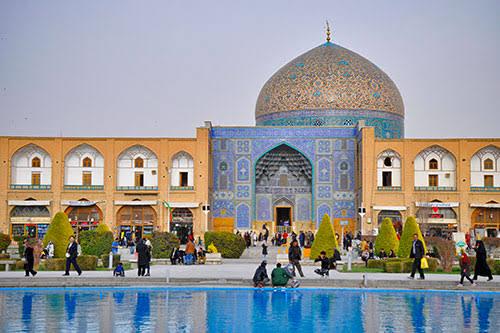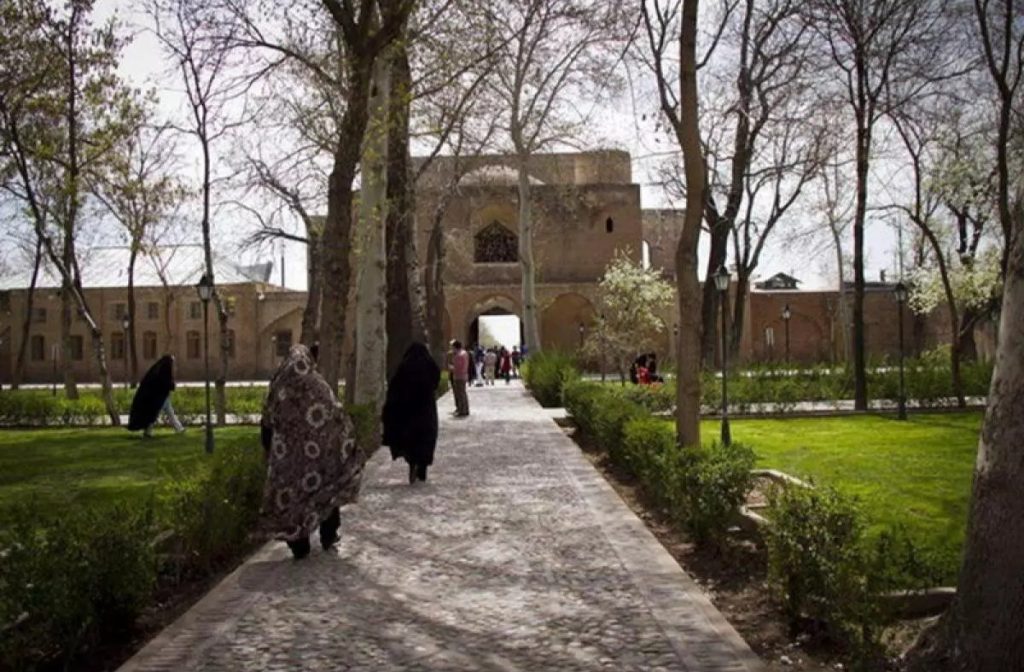Iranian Architecture Overview

Sheikh Lotfollah Mosque of Isfahan
Iranian architecture has a rich and diverse history spanning several millennia, from prehistoric times to the present day.
Iranian architecture is characterized by its unique and distinctive features, including intricate tilework, elaborate ornamentation, and the use of materials such as brick, stucco, and glazed tiles.
One of the most notable examples of Iranian architecture is the ancient city of Persepolis, which was the capital of the Achaemenid Empire in the 6th century BC.

The city features massive stone structures, including palaces, temples, and tombs, adorned with intricate carvings and reliefs.
Iranian Islamic Architecture
Islamic architecture that emerged after the Arab invasion in the 7th century AD. Iranian Islamic architecture is distinguished by its use of intricate tilework, ornate calligraphy, and geometric patterns, often incorporating elements of Persian art and culture.
One of the most famous examples of Iranian Islamic architecture is the Imam Mosque in Isfahan, which was built in the 17th century during the Safavid dynasty. The mosque features a massive dome and minarets, and the interior is decorated with intricate tilework and calligraphy.
Other notable examples of Iranian architecture include the Golestan Palace in Tehran, the Masjed-e Jameh in Yazd, and the Chehel Sotoun Palace in Isfahan.
Intricate Tilework and Ornate Calligraphy
Intricate tilework and ornate calligraphy are two of the most prominent features of Islamic art
The art of tile-making in Iran dates back to ancient times and has been perfected over centuries of practice. Iranian tilework is known for its colorful and intricate designs, often featuring floral motifs, geometric patterns, and calligraphy.
Calligraphy is an essential element of Iranian Islamic art and architecture. The art of calligraphy involves the skilled use of the Arabic alphabet to create beautiful and ornate writing. Iranian calligraphy is often used to decorate mosques, palaces, and other important buildings, with the inscriptions often featuring religious and poetic texts.
Together, intricate tilework and ornate calligraphy create a harmonious and visually striking combination that is characteristic of Iranian Islamic architecture. These elements can be found in various forms of Iranian architecture, including mosques, palaces, and mausoleums.
Safavid Contributions
The Safavid dynasty made significant contributions to Iranian Islamic architecture, particularly in the areas of mosque architecture and tilework.

Some of the most notable Safavid contributions in Iranian Islamic architecture include:
- Mosque Architecture: The Safavids built many magnificent mosques throughout Iran, including the Imam Mosque and Sheikh Lotfollah Mosque in Isfahan, which are considered masterpieces of Islamic architecture. These mosques are known for their intricate tilework, domed roofs, and elaborate calligraphy.
- Use of Polychrome Tiles: The Safavids developed a technique of using polychrome tiles, which allowed for the creation of intricate patterns and designs. They used these tiles to adorn the walls and ceilings of mosques, palaces, and other important buildings, creating a visual feast for the eyes.
- Minarets: The Safavids introduced a new style of minaret architecture, characterized by tall, slim towers with intricate designs and decorations. The minarets of the Sheikh Lotfollah Mosque in Isfahan are excellent examples of this style.
- Caravanserais: The Safavids built many caravanserais throughout Iran, which served as important resting places for travelers and traders. These caravanserais were often decorated with elaborate tilework and calligraphy, creating a sense of grandeur and luxury.
- Gardens: The Safavids were also known for their magnificent gardens, which were designed as places of relaxation and contemplation. These gardens often featured pools, fountains, and pavilions, and were adorned with beautiful tilework and other decorations.
The Iranian Islamic architecture having a rich legacy that continues to influence and inspire architects and designers to this day.


